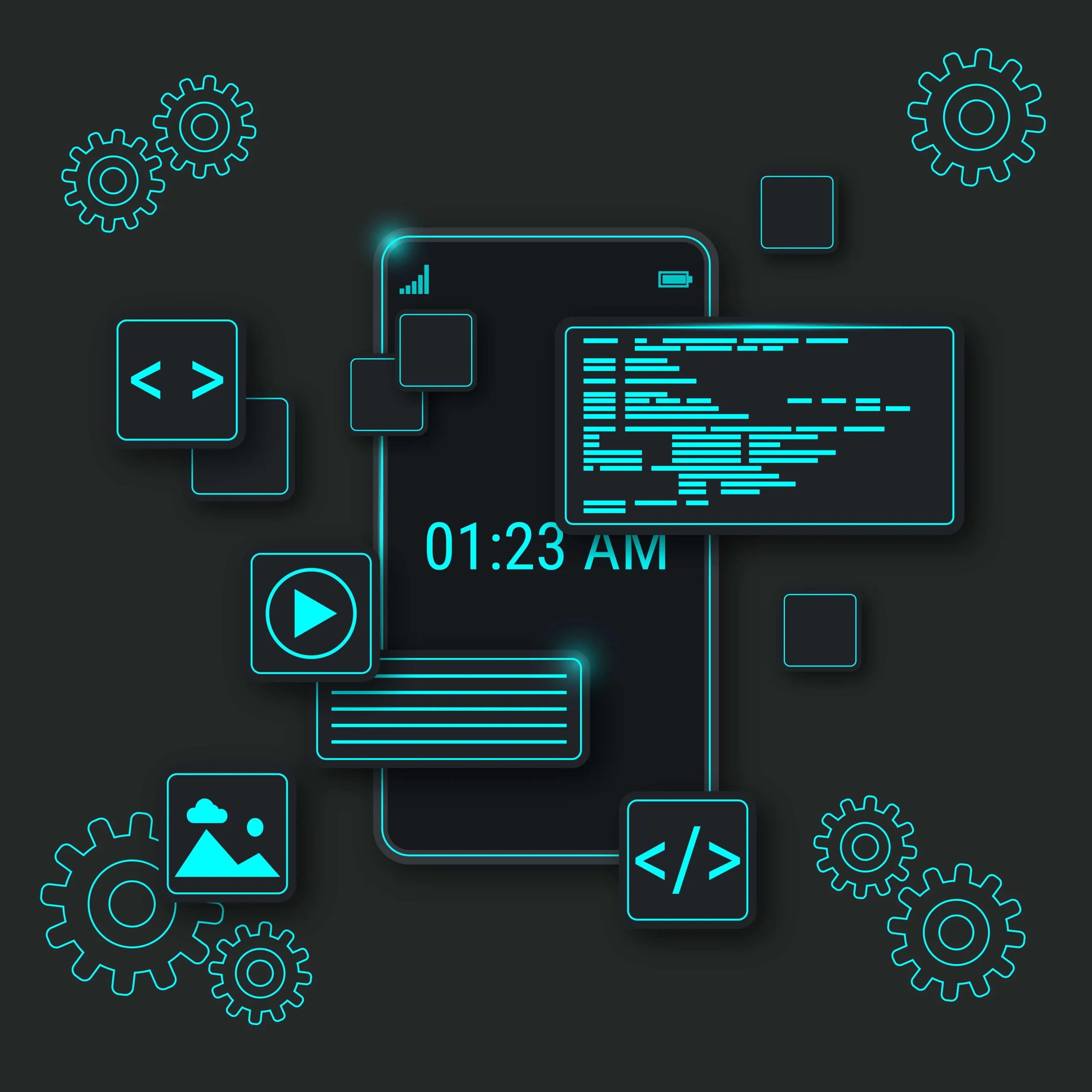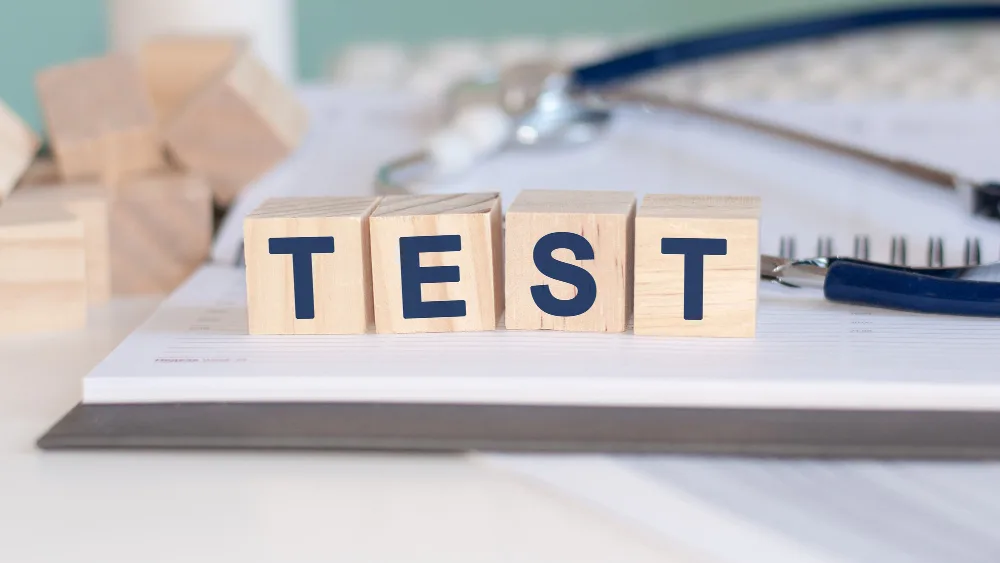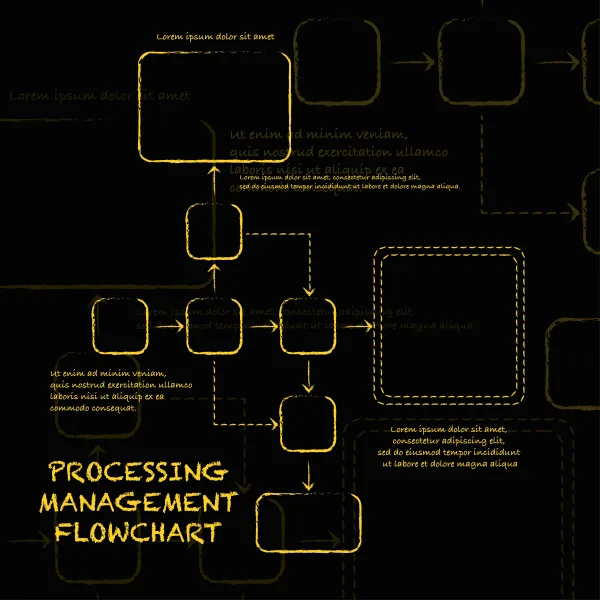With the rapid growth of mobile applications, ensuring they are thoroughly tested for quality and functionality has become more crucial than ever . In this blog post, we will dive into the world of mobile application testing and explore how earning an ISTQB Mobile Application Testing (MAT) certification can help you master this essential skill set . From understanding the unique challenges of testing mobile apps to mastering the latest tools and techniques, this guide will equip you with everything you need to excel in this rapidly evolving field . Let’s embark on a journey to becoming a certified mobile app testing expert !
How Do I Become A Mobile App Tester ?
Becoming a mobile app tester may seem like an intimidating task, but with the right knowledge and guidance, anyone can become a successful one . In this section, we will cover the steps you need to take in order to become a certified mobile app tester .
1 . Understand the role of a mobile app tester : Before diving into any career path, it’s important to have a clear understanding of what the role entails . A mobile app tester is responsible for testing the functionality, usability and performance of mobile applications on different devices . They work closely with developers to identify bugs and recommend improvements in order to ensure that the final product meets the expected quality standards .
2 . Gain knowledge and expertise : The first step towards becoming a successful mobile app tester is gaining knowledge in software testing principles and techniques . This can be achieved through self-study or enrolling in courses such as ISTQB MAT Certification training programs which provide you with comprehensive knowledge of testing methodologies specific to mobile applications .
3 . Familiarize yourself with SDKs and emulators : Software development kits (SDKs) are essential tools that developers use for building apps for different platforms such as Android or iOS . As a tester, it’s important to familiarize yourself with these tools as well as emulators which simulate different devices without physically owning them .
4 . Practice on real devices : While emulators are great for testing initial prototypes, they cannot substitute real device testing entirely . It’s crucial to test your application on real devices to ensure that it functions properly across various screen sizes, resolutions and operating systems .
5 . Develop strong communication skills : Communication is key when working as a mobile app tester since you’ll be constantly collaborating with developers and other team members on bug reports, test cases, etc . Good communication skills will help you convey information effectively while still maintaining a positive working relationship with your team .
6 . Stay updated on industry trends : To excel in any field, it’s important to stay updated on the latest trends and advancements . With mobile technology constantly evolving, it’s crucial for app testers to keep up with the latest updates and changes in order to provide effective testing .
By following these steps, you’ll be well on your way to becoming a certified mobile app tester . Remember to also practice patience, attention to detail and critical thinking skills when tackling any testing challenges that come your way .
What is ISTQB MAT Certification ?
ISTQB Mobile Application Testing (MAT) Certification is a globally recognized certification for professionals in the field of mobile application testing . It is awarded by the International Software Testing Qualifications Board (ISTQB) – an independent, not-for-profit organization that promotes software quality and testing standards worldwide .
The ISTQB MAT certification provides a comprehensive understanding of best practices and techniques needed to effectively test mobile applications . It covers the core concepts and principles of mobile application testing, including usability, compatibility, performance, security and localization testing .
Achieving this certification demonstrates that an individual possesses the necessary knowledge and skills to be competent in mobile application testing . It also serves as a benchmark for employers to assess the capabilities of their testers and make informed decisions about hiring or promoting them .
Why is it important ?
With the rapid growth of mobile technology, more and more organizations are focusing on developing innovative and user-friendly mobile applications . This has led to an increased demand for skilled professionals who can ensure high-quality delivery of these apps . The ISTQB MAT certification ensures that a tester has a well-rounded understanding of all aspects related to mobile app testing, making them stand out in this competitive job market .
Moreover, having an internationally recognized certification like ISTQB MAT adds credibility to your resume and distinguishes you as a proficient tester with industry-recognized qualifications . It opens up new career opportunities and increases earning potential .
What does it cover ?
The ISTQB MAT syllabus covers various topics essential for effective mobile app testing such as :
- Fundamentals of Mobile Applications :
This section covers the basics of different types of devices, operating systems, network protocols used by apps, etc .
- Types of Mobile Applications :
This section explains how different types of apps – native, web-based or hybrid – function on various platforms .
- Testing Activities for Mobile App Development :
Here we learn about different phases involved while creating a robust test strategy .
- Mobile App Testing Techniques :
This section explains various testing techniques like manual and automated testing, exploratory, etc ., used to ensure the quality of mobile apps .
- Usability and Accessibility Testing :
User experience is paramount in today’s app-driven world; here we learn about usability and accessibility best practices .
- Mobile Application Security Testing :
In this section, one learns how to identify vulnerabilities and perform security tests for data integrity, confidentiality, etc .
- Performance Testing for Mobile Applications :
This part covers different types of performance tests like load, stress, endurance and their importance in delivering high-quality apps .
- Localization Testing :
With apps being used globally these days, it is crucial to understand localization aspects such as cultural sensitivities while testing them .
ISTQB MAT certification equips a tester with essential skills to meet the challenging demands of today’s mobile application development industry . It adds significant value to your career by validating your competence in mobile app testing and opens up new possibilities for professional growth .
What Are The Benefits of ISTQB MAT Certification ?
The ISTQB Mobile Application Testing (MAT) certification is a globally recognized and highly coveted qualification for professionals in the field of mobile application testing . It provides individuals with the necessary knowledge and skills to effectively test mobile applications, ensuring that they meet quality standards and provide users with a seamless experience .
Some of the key benefits of obtaining an ISTQB MAT certification are :
- Enhances Career Opportunities :
Earning an ISTQB MAT certification opens up a world of opportunities for professionals in the fast-growing field of mobile application testing . Many companies specifically look for candidates who possess this certification as it demonstrates their expertise in this specialized area . This can also lead to better job prospects, promotions and higher salaries .
- Demonstrates Expertise :
Obtaining an ISTQB MAT certification proves your proficiency in designing and executing a comprehensive testing strategy for mobile applications . It showcases your understanding of crucial concepts such as types of testing, methodologies, tools and best practices in the constantly evolving market .
- Improves On-The-Job Performance :
The knowledge gained through the ISTQB MAT certification program equips individuals with practical skills that can be applied directly to their day-to-day tasks at work . It helps them identify potential flaws or errors in mobile applications early on, resulting in faster bug resolution and improved overall product quality .
- Increases Credibility :
Being certified by a globally recognized organization like ISTQB brings credibility to your resume and enhances your professional reputation within the industry . Clients will have confidence in your abilities knowing you have been trained by experts according to international standards .
- Boosts Team Collaboration :
Taking part in an accredited training course towards obtaining an ISTQB MAT certification encourages teamwork among team members with different levels of expertise – from beginners to seasoned professionals . This creates a collaborative learning environment where participants can exchange ideas and gain insights from each other’s experiences .
Investing time and effort into obtaining an ISTQB MAT certification not only adds value to your professional career, but it also demonstrates your dedication to the field of mobile application testing . It sets you apart from your peers and validates your expertise as a competent and highly skilled tester in the competitive job market . So, if you are looking to enhance your skills and take on new challenges in the world of mobile app testing, pursuing an ISTQB MAT certification is undoubtedly a smart move .
Structure And Format of The Exam :
The ISTQB Mobile Application Testing (MAT) certification exam is a comprehensive test that evaluates your understanding and knowledge of mobile application testing . It consists of 40 multiple choice questions, with a time limit of 90 minutes . The passing score for the exam is set at 65% .
The structure and format of the exam are designed to assess both theoretical knowledge and practical application of mobile application testing concepts . This ensures that certified testers possess a well-rounded understanding of mobile testing techniques and best practices .
The first section of the exam focuses on the fundamentals of mobile application testing . This includes topics such as differences between web-based and mobile testing, common challenges in mobile testing, types of mobile applications and strategies for choosing test devices .
The second section covers more advanced topics related to designing effective test cases for mobile applications . This section tests your understanding of techniques such as boundary value analysis, equivalence partitioning, decision tables, state transition diagrams and automation .
In the third section, you will be evaluated on your knowledge of various types of testing in the context of mobile applications . This includes functional testing, non-functional testing (such as performance and usability), compatibility testing across different devices and platforms, security testing, localization & internationalization testing .
The final section focuses on managing risks associated with mobile application development and testing . It includes questions related to defect management strategies specific to mobile apps, handling environmental constraints during execution/testing phases among others .
It is important to note that the MAT certification exam does not cover any specific tool or technology but rather emphasizes on fundamental concepts necessary for successful implementation in any project environment . Hence it is recommended that candidates have working experience with using real devices as well as emulators/simulators while preparing for this certification .
To help you prepare effectively for this exam structure patterned mocks tests are available through ISTQB approved training partners such as AT*SQA who offers an official certificate after successfully passing in their simulator based mock exams .Are you ready to take the next step towards becoming a certified mobile application tester ? Make sure you have a thorough understanding of the exam format and structure, as well as extensive hands-on experience with mobile testing techniques . Studying from reliable sources and regularly practicing sample questions will help you ace this certification exam with ease .
Passing Criteria :
The passing criteria for the ISTQB Mobile Application Testing (MAT) certification exam is an important aspect to understand before embarking on your journey towards becoming a certified mobile application tester .
To successfully pass the MAT certification exam, candidates must obtain a minimum score of 65% or higher . This means that out of the total 40 multiple-choice questions, at least 26 must be answered correctly .
It is also crucial to note that there are no sectional cutoffs in this exam . This means that even if a candidate fails to score well in one particular section, they can still compensate for it by scoring higher in other sections .
In addition to the overall passing score, candidates must also ensure that they attain at least half of the marks allocated for each individual competency area . These competency areas include fundamentals of testing mobile applications, test design techniques and tools for mobile applications, setting up and executing tests on mobile devices, defect reporting and tracking in mobile application testing and finally, testing non-functional aspects of mobile applications .
Furthermore, it is important to understand the scoring system used in this exam . Each question carries one mark and there is no negative marking for incorrect answers . This allows candidates to attempt all questions without the fear of losing points . However, as time management is key during any certification exam, it is advisable to not spend too much time on difficult questions and instead focus on answering all questions accurately within the given time frame .
To provide a fair chance to all candidates appearing for this exam, strict regulations are followed in terms of cheating or misconduct during the examination process . Any candidate caught engaging in such activities will be disqualified immediately and their results will be nullified .
While obtaining a minimum score of 65% might seem like a daunting task initially, with proper preparation and understanding of the scope covered under each competency area, success can surely be achieved . It is also worth mentioning that because this certification does not have an expiration date, it is a valuable and recognized credential to have in the field of mobile application testing . So, put your best foot forward and aim for excellence to become a certified ISTQB Mobile Application Testing professional .
Time Management Techniques :
Time management is a crucial skill for any mobile application tester and it plays an important role in the success of the overall testing process . In this section, we will discuss some effective time management techniques that can help you excel in your mobile application testing career .
- Prioritize tasks :
The first step towards effective time management is to prioritize your tasks . Identify the critical tasks that need immediate attention and create a to-do list accordingly . This way, you can ensure that you spend your time on high-priority tasks first and avoid last-minute rushes .
- Create a schedule :
A well-structured schedule can be a game-changer when it comes to managing your time effectively . Plan out your day or week with specific time slots allocated for different tasks such as test case execution, bug reporting or team meetings . Having a schedule helps in maintaining focus and avoiding distractions .
- Use time-tracking tools :
There are various applications and tools available that can help track how much time you are spending on specific activities . These tools provide detailed insights into where your time is going and can help identify areas where you need to manage your time better .
- Break down large tasks :
Sometimes, big projects or tasks may seem overwhelming and challenging to complete within deadlines . In such cases, breaking them down into smaller achievable goals can make them more manageable and less stressful .
- Practice the Pomodoro technique :
The Pomodoro technique involves working intensely for 25 minutes followed by a short break of 5 minutes, with longer breaks after every four intervals . This technique not only helps manage distractions but also promotes productivity by providing regular breaks for recharging our brains .
- Start with difficult tasks :
It’s best to tackle challenging or complex projects/tasks while our minds are fresh rather than procrastinating them until later in the day when fatigue sets in . By prioritizing difficult tasks first thing in the morning or at peak energy times during the day, we can ensure that they receive our best focus and attention .
- Avoid multitasking :
While many may think of multitasking as a time-management technique, it actually leads to reduced productivity and increased stress levels . Focusing on one task at a time ensures quality work and efficient use of time .
Mastering time management techniques is crucial for mobile application testers as it not only helps in completing tasks within deadlines but also improves overall performance and reduces stress levels . By implementing the above strategies, you can effectively manage your time and excel in your ISTQB MAT certification journey .
How To Test Mobile Application Step By Step ?
As the demand for mobile applications continues to rise, it has become increasingly important for developers and testers to ensure their apps are of high quality and function properly on different devices . This is where mobile application testing comes into play, helping to identify bugs, glitches and other issues that may affect user experience .
In this section, we will discuss how you can test a mobile application step by step in order to achieve optimal functionality and user satisfaction . These steps are aligned with the best practices recommended by the International Software Testing Qualifications Board (ISTQB) for their Mobile Application Testing certification (MAT) .
- Step 1 : Identify Test Objectives
The first step in any software testing process is to clearly define the objectives of your tests . In this case, we want to ensure that the mobile application meets its intended purpose and functions as expected . This includes checking for usability, performance, compatibility with different devices and operating systems, security vulnerabilities and more .
- Step 2 : Choose Your Testing Approach
There are various approaches that can be used when testing a mobile application . The most common ones include manual testing where testers manually interact with the app on different devices; automated testing which uses tools to run pre-written scripts; exploratory testing which involves unstructured ad-hoc testing; or crowd-sourced testing which enlists real users to test the application in a variety of scenarios . It’s important to choose an approach that aligns with your test objectives .
- Step 3 : Create Test Cases
Before diving into execution, it’s essential to have well-documented test cases outlining what needs to be tested along with expected results . These can be created based on requirements or user stories provided by developers/designers or derived from use cases discussed within your team .
- Step 4 : Execute Tests
With clear objectives and detailed test cases in place, you’re now ready for execution . Depending on your chosen approach from Step 2 above – execute tests manually or run automated scripts . During this process, it is important to take note of any bugs or defects encountered and document them for further analysis .
- Step 5 : Analyze Results
Once all tests have been executed, the next step is to analyze the results against expected outcomes . Identify any discrepancies or bugs encountered during testing and provide detailed reports with steps to reproduce the issue for developers to fix .
- Step 6 : Repeat Testing Cycle
Mobile applications are continuously evolving and so should your testing . As new features are added and changes made, it’s essential to cycle through these steps repeatedly in order to maintain high-quality standards for your mobile app .
By following these six steps, you can ensure a comprehensive testing process that will help deliver a high-quality mobile application . However, this is just an overview of the test process – there is much more depth involved in mastering mobile application testing which we’ll explore in further sections .
How Can I Practice Mobile Testing ?
Mobile testing is a crucial aspect of the software development process and it plays an integral role in ensuring the functionality, usability and security of mobile applications . As a result, mastering mobile application testing is essential for any aspiring or experienced tester in today’s digital age .
To effectively master mobile testing techniques, it is vital to regularly practice and enhance your skills . Here are some ways you can practice mobile testing :
- Use Mobile Testing Tools :
There are several tools available in the market that can help you with effective mobile testing . Some popular ones include Appium, Calabash, Robotium and Selenium Appium (for cross-platform apps) . These tools have features such as automated test scripts and debugging capabilities that simulate real-life scenarios for robust testing .
- Utilize Emulators and Simulators :
Emulators and simulators are great resources for practicing mobile testing without having access to physical devices . They mimic various device configurations, network conditions, etc ., so testers can perform functional tests on different platforms without physically owning multiple devices .
- Develop Testing Strategies :
Creating test strategies specific to mobile applications is crucial for efficient testing . Strategize by identifying key functionalities for each app release cycle; this includes determining compatibility across devices’ screen sizes/operating systems/networks while covering all critical use cases .
- Conduct Exploratory Testing :
Exploratory tests involve exploring an app without predefined scripts or steps – allowing testers to assess the app’s overall quality while giving them room to improvise their approach if required .
- Testing Across Different Networks :
In real-world usage scenarios, users will connect depending on Wi-Fi or varying networks’ data plans/bandwidth speeds when using apps – highlighting how vital network-dependent features should be tested thoroughly before releasing apps into production .
- Don’t Forget Performance Testing
Performance/engineering teams frequently assess complex variables like concurrent user behaviors/location whilst dealing with highly elastic cloud-based infrastructure – keeping regular performance testing on feature/check-in code basis is critical to avoid production bottlenecks .
Mastering mobile application testing requires consistent practice and utilization of available resources . By incorporating these techniques into your practice sessions, you can improve your skills as a mobile tester and stay up-to-date with industry standards . Additionally, it prepares you for the ISTQB MAT certification by giving you practical experience in mobile testing . Remember, practice makes perfect – so keep honing your skills to become an expert in mobile application testing .
What Is The Difference Between Mobile Testing And Mobile Application Testing ?
When it comes to mobile application testing, there are two terms that often get used interchangeably ; mobile testing and mobile application testing . While they may sound similar, there are key differences between the two .
Mobile Testing refers to the process of evaluating the functionality, usability and consistency of a mobile device or its features . This can include hardware aspects such as screen size, battery life, network connectivity and software aspects like operating system compatibility and user interface design . In simpler terms, mobile testing is focused on making sure the device works properly .
On the other hand, Mobile Application Testing specifically deals with evaluating the performance and quality of a mobile application itself . It involves checking for bugs, glitches, crashes, UI/UX issues, security vulnerabilities and ensuring overall functionality of an app on different devices . In essence, it focuses on assessing the effectiveness of the software in meeting its intended purpose .
One important aspect that sets these two types of testing apart is their scope . Mobile Testing covers a wider range by including all aspects of a mobile device’s capabilities while Mobile Application Testing focuses solely on validating an application’s functionality on multiple devices . However both are crucial for ensuring high-quality user experience .
Another major difference lies in their approach . Mobile Testing follows a more manual approach compared to Mobile Application Testing which incorporates automation tools and techniques for more efficient test coverage across various devices .
Furthermore, Mobile Application Testing requires specialized knowledge and skills due to factors such as variety in operating systems (iOS vs Android), different form factors (phone vs tablet) and frequent updates in technology – making it challenging but also highly critical for successful deployment of any mobile application .
Additionally,the goals of each type differ – while Mobile Testing aims to identify defects within phone hardware or OS versions; Mobile Application testing aims at uncovering potential issues within specific functionalities or workflows across multiple platforms .
Mobile Testers focus mainly on identifying issues related to physical attributes like screen size or battery life on a device, while Mobile Application Testers focus solely on delivering high-quality, fully functional and user-friendly applications to end users across multiple platforms . However, both are essential for the overall success and quality of a mobile application .
Conclusion
As the use of mobile devices and applications continues to grow, the need for skilled professionals in mobile application testing becomes more crucial . The ISTQB MAT Certification can help you become an expert in this field and stand out among your peers .
By following our guide and tips, you will be well on your way to mastering mobile application testing and achieving this valuable certification . So don’t hesitate, start preparing now and unlock endless opportunities in the world of mobile technology !













